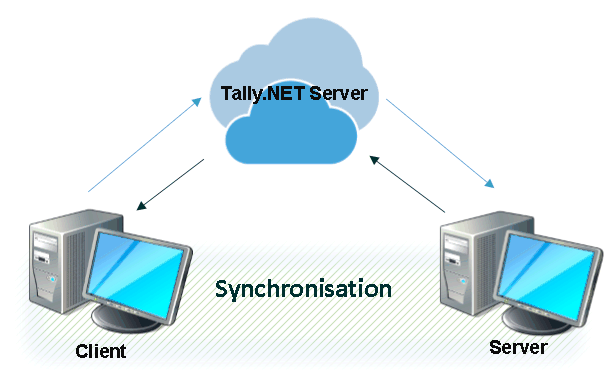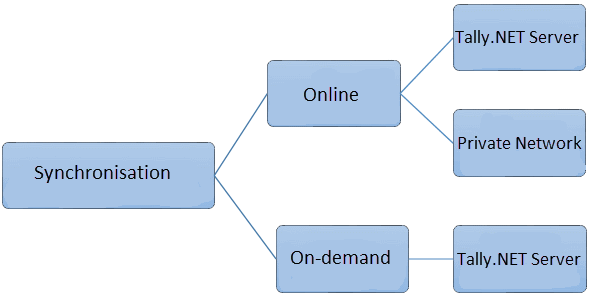
You can replicate data between two or more instances of Tally.ERP 9 using a client–server environment using Data Synchronisation. Data synchronisation can be initiated from the client to the server or vice versa, depending on your configuration.

Data synchronisation comprises the following components:
● Client - Sends or receives data based on the client rule defined.
● Server - Accepts or rejects data based on the client rule defined.
● Tally.NET Server - The Tally server that facilitates synchronisation between one or more clients and servers.
Note: To synchronise using Tally.NET Server, a valid TSS is required for connecting to the Tally.NET Server.
In Tally.ERP 9, you can synchronise data on-demand or online.

● On-de mand Synchronisation : In this type of synchronisation, the client and the server companies need not be online at the same time. Data is synchronised using Tally.NET Server.
● Online Sync hronisation : In this type of synchronisation, the client and the server companies are connected online through Tally.NET Server, or a p rivate network.
The key differences between on-demand and online synchronisation are:
|
On-demand Sync |
Online Sync |
|
Client and server companies need not be online at the same time during synchronisation. |
Client and server companies need to be online during synchronisation. |
|
You can synchronise data whenever required. |
You can synchronise data only when the companies are connected live. |
|
The Tally.NET Server stores the sync rule and data until it is accepted by the synchronising company. |
The sync rule and data are immediately transferred to the connected company for synchronisation. |
|
Benefits |
Description |
|
Sharing business critical data
|
Synchronisation helps to share business critical data such as: ● Payments or receipts from branch offices ● Accounting masters created at head office ● Inventory data from warehouses ● MIS reports from one location to another |
|
Data distribution in multiple locations
|
Data synchronisation ensures that businesses that have more than one branch can share, update, and manage data at all locations. The head office is usually configured as the server, and the branches as clients. |